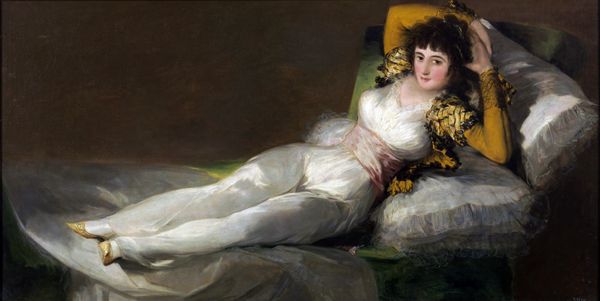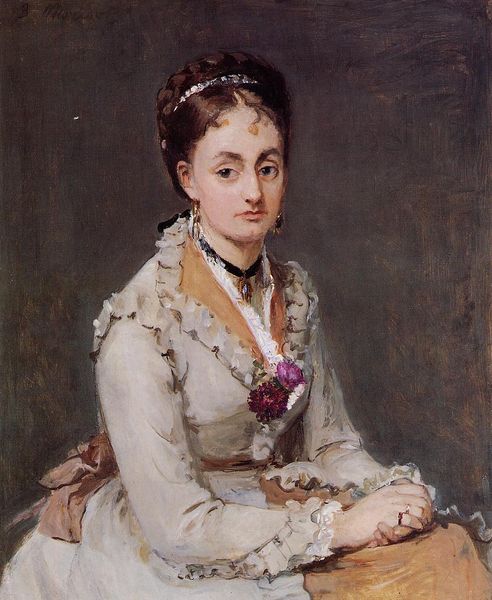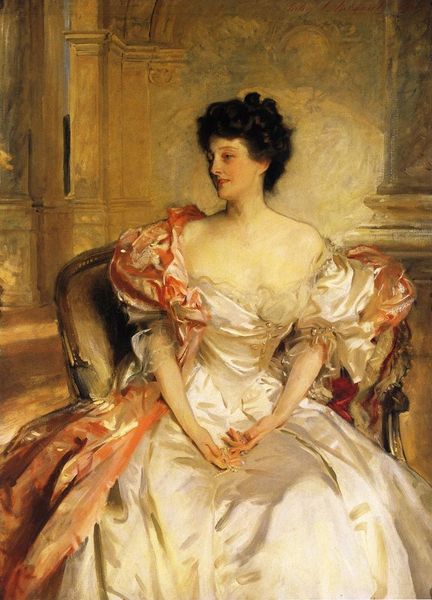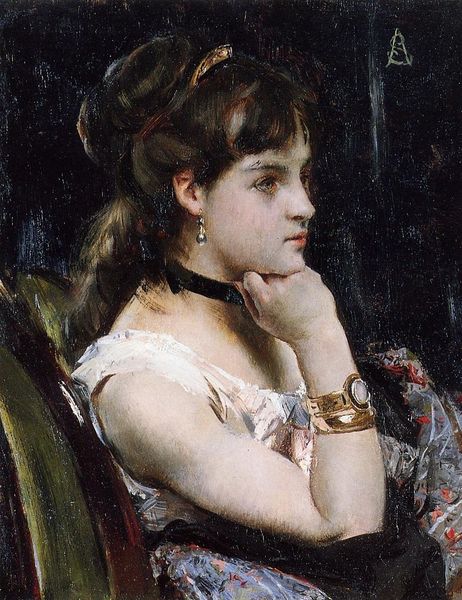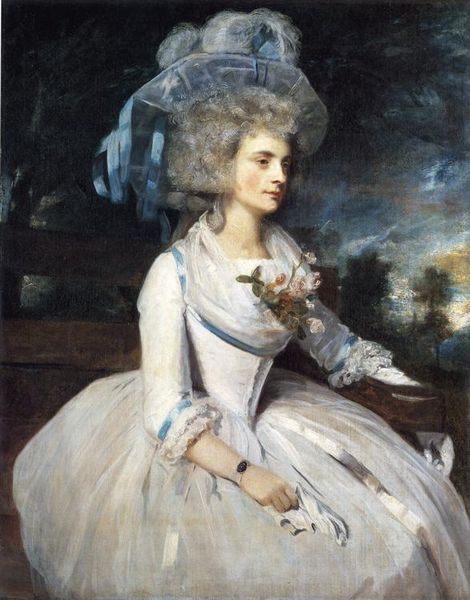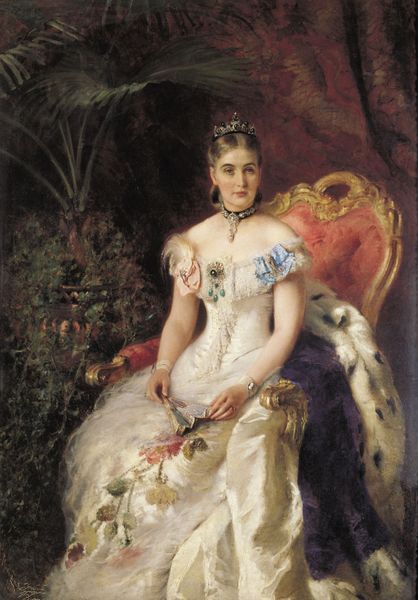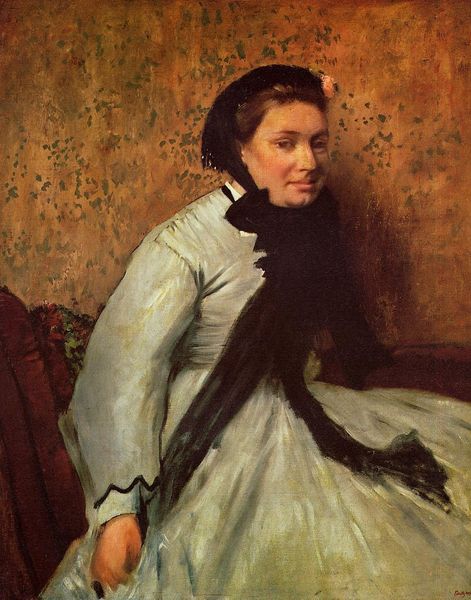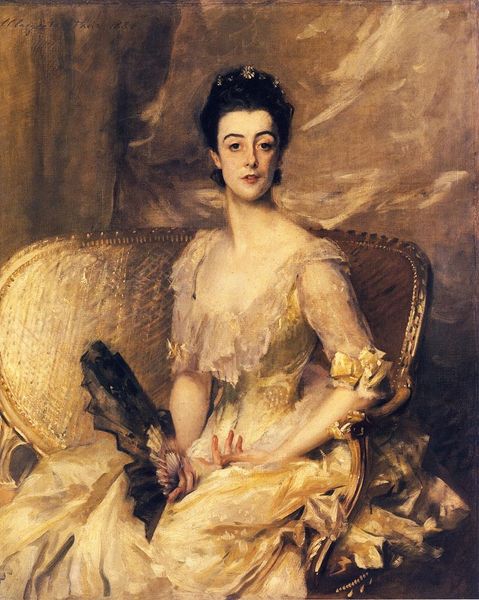
Copyright: Public domain
Curator: Welcome. We are looking at "Portrait of a Woman in White" completed in 1879 by Eva Gonzales. It is rendered in oil paint and offers a window into late 19th century society. Editor: The woman seems… ethereal. The white dress kind of melts into the background, creating this dreamlike atmosphere, doesn’t it? It's as if she's emerging from a mist. Curator: Indeed, there’s a considered contrast at play. Gonzales juxtaposes the bright dress with the darker, more ambiguous backdrop, directing focus toward the figure’s face and delicate composure. The texture created in the folds of the dress also contrast with her very subtly blushing face. Editor: I see it as a subtle rebellion. All that pristine white—but her gaze isn’t innocent. It’s confident, self-aware, a quiet statement against societal expectations for women at the time, maybe? She doesn't need to fade away, even in the bright dress; there's too much happening on her face. Curator: That's an interesting point. Formally speaking, notice how Gonzales’s brushwork achieves a dual purpose, building texture and softening lines, a key element within Impressionistic portraiture. And, if we apply a Semiotic reading, her accessories further define social standing—the elaborate hat, the delicate gloves, and that almost ghostly dress... it’s not purely aesthetic, it signifies identity. Editor: Or maybe the “identity” is a performance itself? Like, here I am, playing the part, but look closer, and the gaze holds secrets, yearnings beyond the surface. Do you know what I mean? Also the composition's kind of cramped -- almost all that dress is right there in our faces. It’s bold, as a creative statement! Curator: Certainly. We see an approach rooted in acute observation but elevated through aesthetic handling. She invites viewers to see her sitter on many levels: societal and material certainly, but her artistic vision also encourages us to dig deeper for any sort of personal, subjective interpretation. Editor: Right, the canvas almost vibrating. It really reflects the ambiguity and subjectivity of perception itself. And what about the symbolism of white—purity, but also blankness, possibility... Curator: So apt; this work reminds me of painting's capability to freeze a moment and the layers of questions it allows that moment to generate, too. Editor: A quiet invitation for discourse that still speaks to us today. Thanks for the chat.
Comments
No comments
Be the first to comment and join the conversation on the ultimate creative platform.


